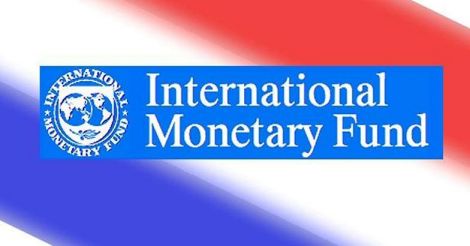Washington: The IMF has cut India's growth rate for the current fiscal year to 6.6 percent from its previous estimate of 7.6 per cent due to the "temporary negative consumption shock" of demonetization, days after the World Bank also decelerated India's growth estimates.
"In India, the growth forecast for the current (2016-17) and next fiscal year were trimmed by one percentage point and 0.4 percentage point, respectively, primarily due to the temporary negative consumption shock induced by cash shortage and payment disruptions associated with the recent currency note withdrawal and exchange initiative," the International Monetary Fund (IMF) said in its latest World Economic Outlook (WEO) update released on Monday.
The IMF said that after a lacklustre outturn in 2016, economic activity is projected to pick up pace in 2017 and 2018, especially in emerging market and developing economies.
The global growth for 2016 is now estimated at 3.1 percent, in line with the October 2016 forecast.
Economic activity in both advanced economies and emerging market and developing economies (EMDEs) is forecast to accelerate in 2017-18, with global growth projected to be 3.4 percent and 3.6 percent, respectively, again unchanged from the October forecasts, it said.
As per new IMF projections, India's growth in 2016 is now estimated to be 6.6 percent as against 7.6 percent earlier forecast.
In 2017, IMF has projected a growth rate of 7.2 percent as against its previous forecast of 7.6 per cent.
The Indian economy is likely to revive to go back to its previously estimated growth rate of 7.7 percent in 2018, according to the WEO update.
The cut in India's growth rates comes days after the World Bank decelerated India's GDP growth for 2016-17 fiscal to 7 percent from its previous estimate of 7.6 percent citing the impact of demonetization. But forecast issued on January 11 said that India would regain momentum in the following years with a growth of 7.6 percent and 7.8 percent due to a reform initiatives.
Despite IMF's downward revision of India's growth rate and a slight upward revision of China's growth projections, India continues to be the fastest growing countries among emerging economies.
But in 2016, China with 6.7 percent has edged past India (6.6) with 0.1 percentage point.
The growth forecast for 2017 was revised up for China (to 6.5 per cent, 0.3 percentage point above the October forecast) on expectations of continued policy support, the IMF said. India's growth rate in 2017 as per the latest IMG projections is 7.2 percent.
In 2018, China's growth rate is projected to be 6 percent against India's 7.7 percent.
IMF said, in China, continued reliance on policy stimulus measures, with rapid expansion of credit and slow progress in addressing corporate debt, especially in hardening the budget constraints of state-owned enterprises, raises the risk of a sharper slowdown or a disruptive adjustment.
These risks can be exacerbated by capital outflow pressures especially in a more unsettled external environment, the IMF said.
IMF said global activity could accelerate more strongly if policy stimulus turns out to be larger than currently projected in the US or China.
Notable negative risks to activity include a possible shift toward inward-looking policy platforms and protectionism, a sharper than expected tightening in global financial conditions that could interact with balance sheet weaknesses in parts of the euro area and in some emerging market economies, increased geopolitical tensions, and a more severe slowdown in China, it said.
Maurice Obstfeld, economic counsellor and IMF Research Department director, at a news conference here, said among emerging economies, China remains a major driver of world economic developments.
"Our China growth upgrade for 2017 is a key factor underpinning the coming year's expected faster global recovery. This change reflects an expectation of continuing policy support; but a sharp or disruptive slowdown in the future remains a risk given continuing rapid credit expansion, impaired corporate debts, and persistent government support for inefficient state-owned firms," he said.
In light of the US economy's momentum coming into 2017 and the likely shift in policy mix, IMF has moderately raised its two-year projections for US growth.
"At this early stage, however, the specifics of future fiscal legislation remain unclear, as do the degree of net increase in government spending and the resulting impacts on aggregate demand, potential output, the Federal deficit, and the dollar," Obstfeld said.
























